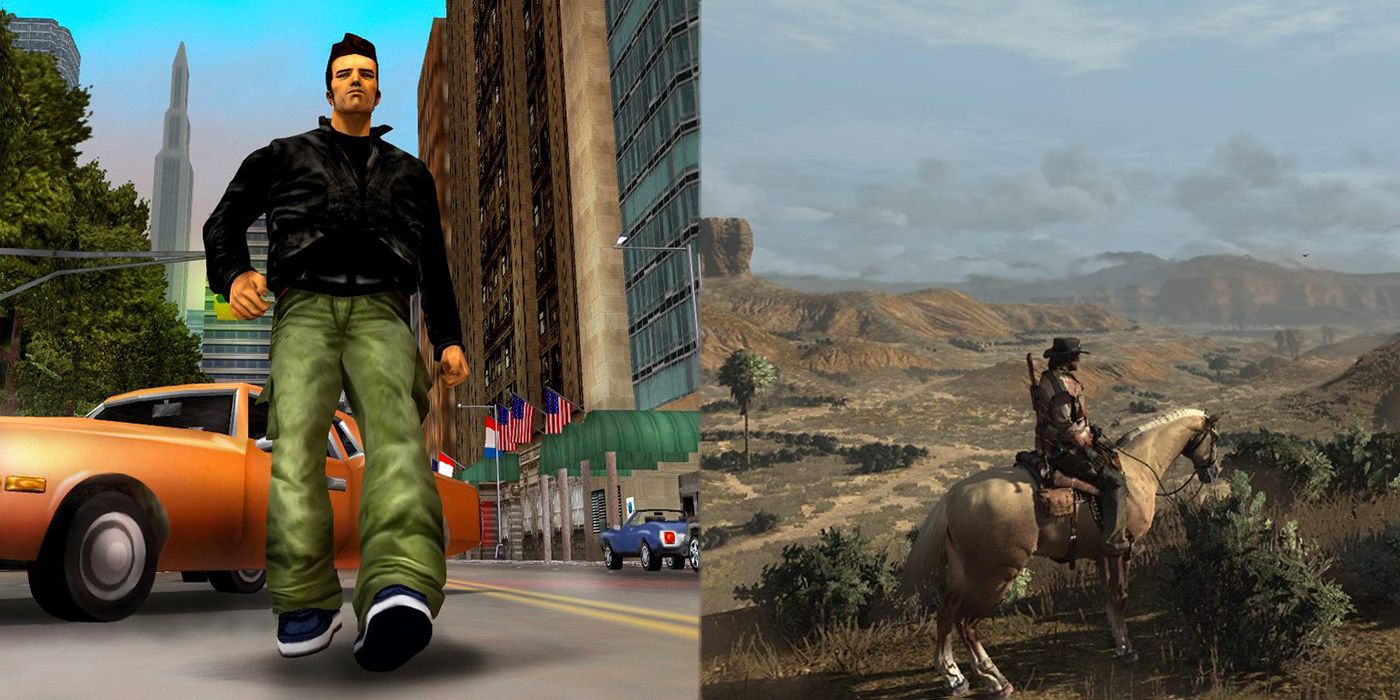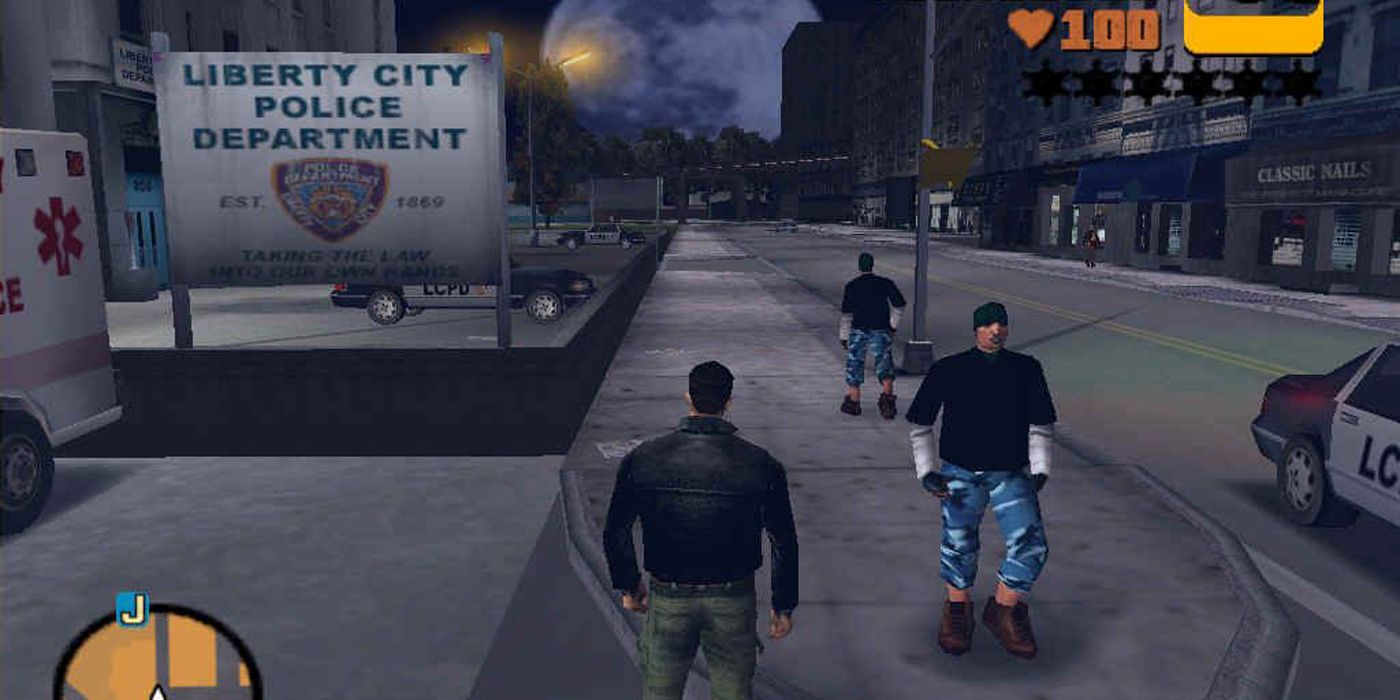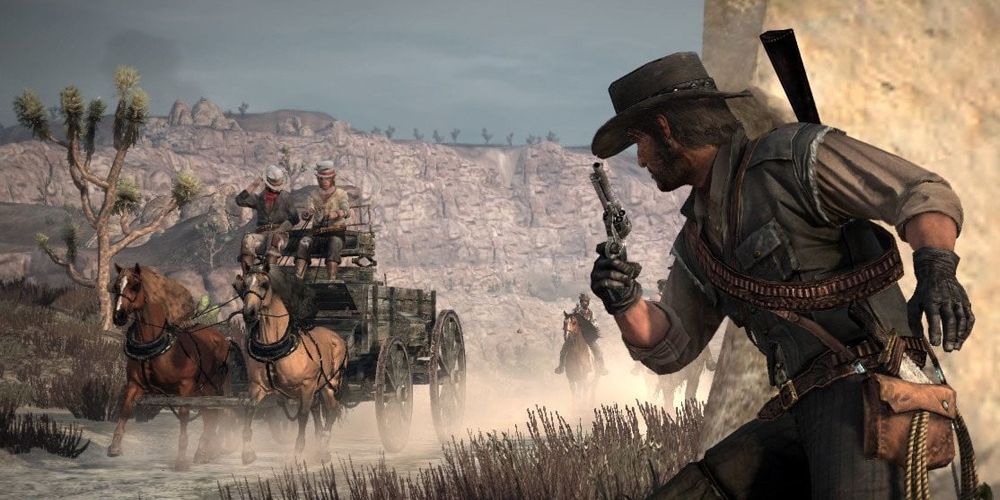In the early 90s, one of the biggest revolutions in gaming was the widespread adoption of 3D worlds in games. Iconic adventures like Mario 64 and Ocarina of Time with Nintendo, Metal Gear Solid and Crash Bandicoot for PlayStation, and various other games and systems in between helped push 3D worlds forward. 3D games with unique worlds in general had existed for a few years, but giant and immersive (for the time) worlds were pioneered by Rockstar Games in two key franchises: the Grand Theft Auto and Red Dead Redemption series.
At the turn of the century, Rockstar Games and development studio DMA Design helped pioneer the western-style open world game with Grand Theft Auto 3 in 2001. For the first time, a video game had properly emulated the perception of a living and breathing simulation of the real world in gaming. There was still plenty of "uncanny valley" for sure, but Rockstar Games eventually tackled that issue a decade later with Red Dead Redemption. John Marston's adventure was one of the first games to make that expansive 3D world feel like it genuinely reacted to the player's actions, but both games have heavily influenced the open world genre and several games to come after them.
Grand Theft Auto 3's Innovative World Design
Modern open world games, or at the very least western open world games, arguably started with the release of Grand Theft Auto 3. There were other games prior like Shenmue, the 2D classic The Legend of Zelda games, and even Mario 64 that are credited as some of the first open world games, but none were like Grand Theft Auto 3 at the time. Grand Theft Auto 3's Liberty City was the first game to simulate an active and fluid world within a video game, with NPC citizens and vehicles traveling across the uncanny valley version of New York City.
Of course, the game had its limitations, but Grand Theft Auto 3 was a huge step in video game history. Random people walking down sidewalks, drivers heading to and from work while following traffic lights and laws, all of whom are voiced characters that had several basic reactions to the players' actions. Grand Theft Auto 3 emphasized the idea of a living open world in a meaningful way that no other video game had done before, regardless of how rudimentary it was. This game would be the basis for all future Grand Theft Auto games, of course, but it also set the bar high for practically every sandbox/open world game to come after it.
Red Dead Redemption's Innovative Interactivity
In between 2001 and 2010, not only were there seven additional Grand Theft Auto games released, but there were several unique open world games that released from a variety of developers/publishers. All of these games iterated off the foundation that Grand Theft Auto 3 set in various ways, but there was still an underdeveloped aspect of open world games that very few franchises had touched on. While many associate a highly interactive open world with the simulation-like Red Dead Redemption 2, that game wouldn't have revolutionized open worlds without the first Red Dead Redemption.
Other open world games had provided players with a sandbox where they were the center of attention, but Red Dead Redemption was largely designed against this idea. While it wasn't as clearly revolutionary as the Grand Theft Auto sister franchise, Red Dead Redemption crafted a western world that didn't entirely revolve around the player's point of view.
Various townspeople truly go about their days, in a fluid world with little to no loading screens outside of booting up the game. Where Grand Theft Auto 3 had simulated a grandiose 3D world that lived in service to the player, Red Dead Redemption focused on crafting a world where the player is simply a participant among other NPCs. John Marston could help passerby asking for a ride into town, John could get robbed by bandits on an empty world, or he could be attacked and mauled by wildlife if he's not careful. These kinds of interactions in other open world games were typically planned events that happened to players on purpose. In Red Dead Redemption, these kinds of things happened organically, no matter where the player is in the world.
Rockstar Games' Impact on Future Open World Games
These two design philosophies and innovations have led to some of the best open world games to this day. Immersive games like Metal Gear Solid 5, The Legend of Zelda: Breath of the Wild, The Witcher 3, The Elder Scrolls 5: Skyrim, and many more have all evolved and iterated on the ideas presented in Rockstar Games' flagship franchises. Even upcoming games like Cyberpunk 2077 are honing and refining both of these development concepts together to potentially create one of the most simulatory triple-A games of all time.
Nowadays, some of gaming's biggest franchises like Assassin's Creed continue to iterate and steadily expand on these foundations. Without Rockstar Games' two biggest series, some of the best games ever made theoretically wouldn't have existed or been designed very differently. These two innovative games are the reasons why both the Grand Theft Auto and Red Dead Redemption franchises have such staying power for fans. The pedigree of Rockstar Games' open worlds were honed and refined upon these two pivotal games that made Rockstar the powerhouse publisher it is today.
Grand Theft Auto 5 and Red Dead Redemption 2 are out now.




